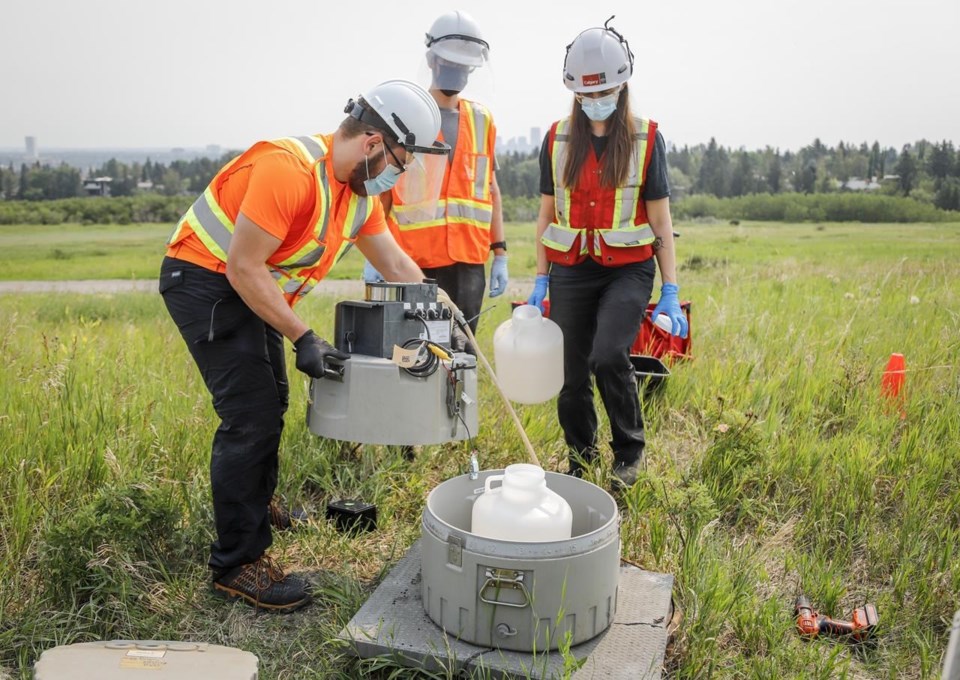CALGARY — Researchers say the amount of opioids and other illicit drugs found in a monitoring of Alberta wastewater jumped in June.
Wastewater testing is done weekly at six sites throughout the province as part of a pilot study funded by the Mathison Centre for Mental Health Research and Education at the Cumming School of Medicine and the Calgary Health Foundation that ends this fall.
There was four times the amount of carfentanil present in waste water in June compared to earlier in the year, said Dr. Monty Ghosh, an internist, addictions specialist and assistant professor at the University of Calgary and University of Alberta.
"I don’t think people were aware of what was in the drug supply," he said in an interview Wednesday.
"Our hypothesis, and we can't confirm this of course, is that it was ... a new cocktail of carfentanil, benzos and xylazine that might have come into the drug supply. We hadn't seen this sort of this super concoction before."
Studies have shown carfentanil to be 10,000 times more potent than morphine, 4,000 times more potent that heroin and 100 times more potent than fentanyl. It's a synthetic opioid normally used in veterinary medicine to tranquilize large animals.
Ghosh said he's saddened by the data, but not surprised. He said the subject of addictions is personal for him.
"I've lost so many patients to the drug poisoning crisis and there are people I knew who had worked in this field -- peers, people with experience -- who also lost their lives to this," Ghosh said.
"We have more overdose and drug poisoning deaths in our province than we have heart attacks, car accidents and murders per day. It's the biggest public health crisis facing our country."
Ghosh shared the data with his network, but thinks emergency responders, health-care providers and government officials could benefit from the knowledge as well.
"It could be used as an early warning to provide more information about what is going on with the level of toxicity of the drug supply and possibly prevent deaths," Ghosh said.
Ghosh is one of the principal investigators on the study, along with infectious disease specialist Dr. Michael Parkins, who was involved in an earlier wastewater study tracking COVID-19.
Parkins said the same detection system was revised to look for 48 substances connected to the use of illicit drugs.
“We are also monitoring for toxic agents that are added to illicit substances during their processing. Several of these diluents are associated with specific toxicities that can result in a range of rare adverse events that are difficult to diagnose," Parkins said.
"Wastewater surveillance through our sentinel network offers the potential to warn health providers to be alert for those presenting with compatible symptoms.”
The research team isn't disclosing the location of the sites, as Ghosh said that may increase stigma in these areas and leave the impression that illegal drug use is only happening in a few specific locations.
This report by The Canadian Press was first published Aug. 30, 2023.
Bill Graveland, The Canadian Press



